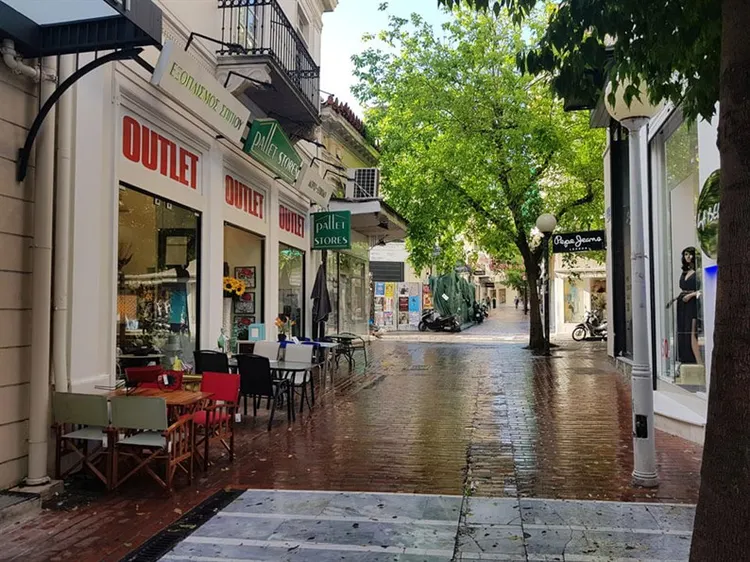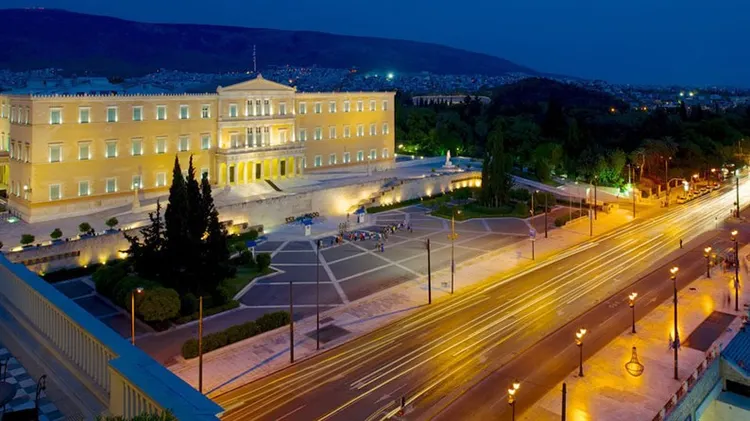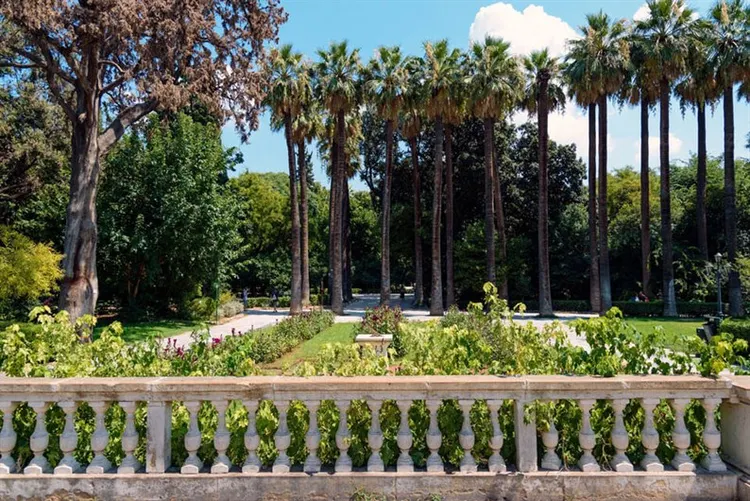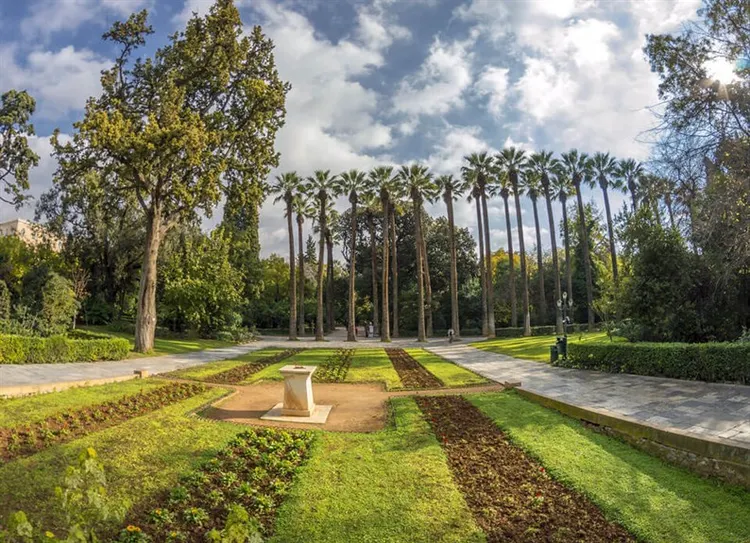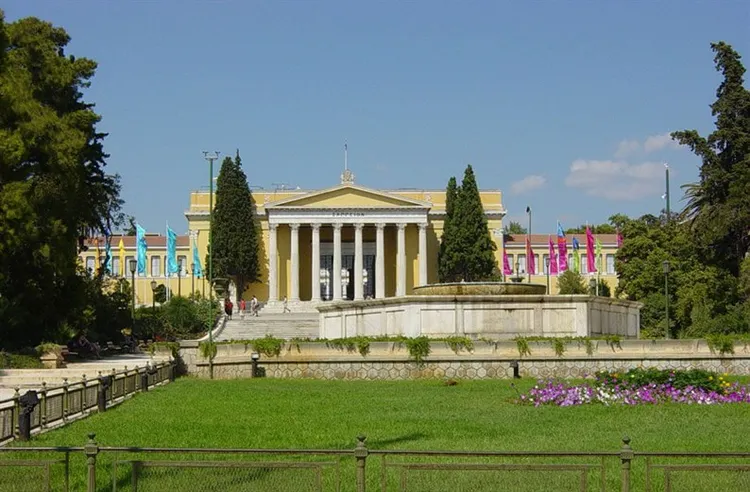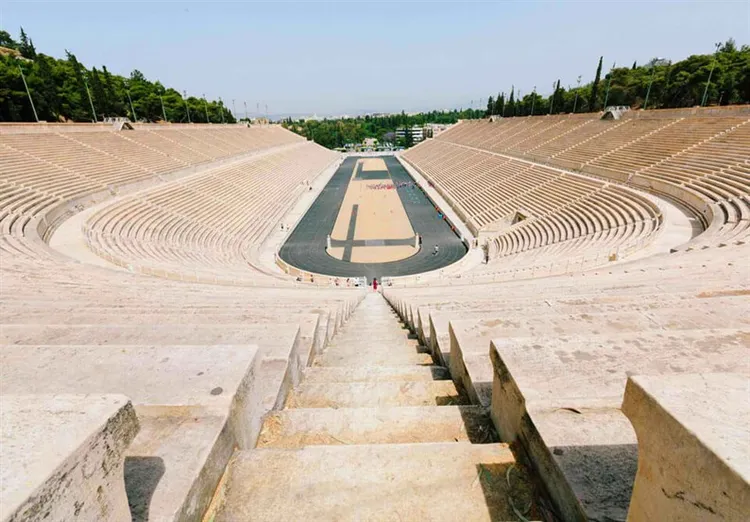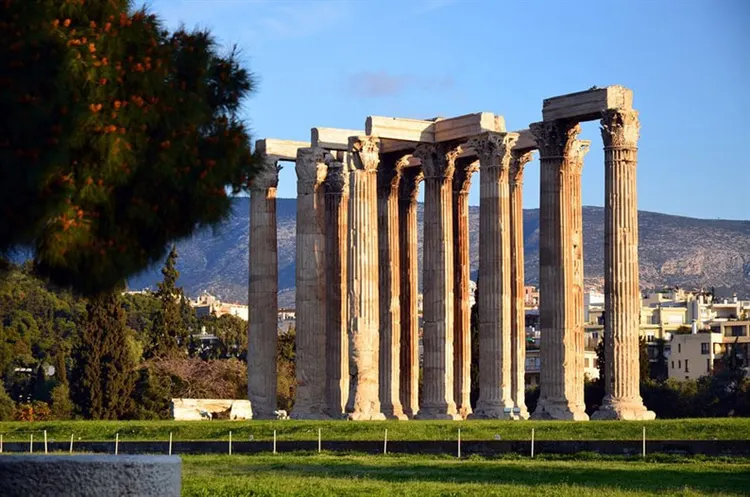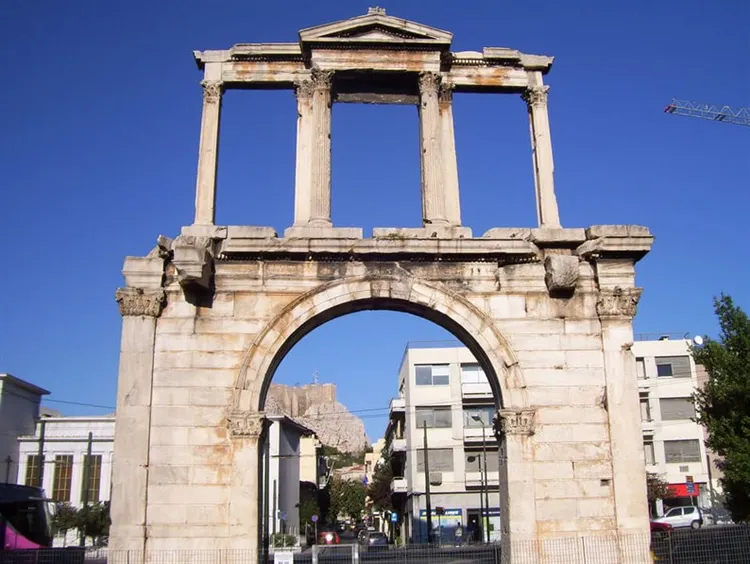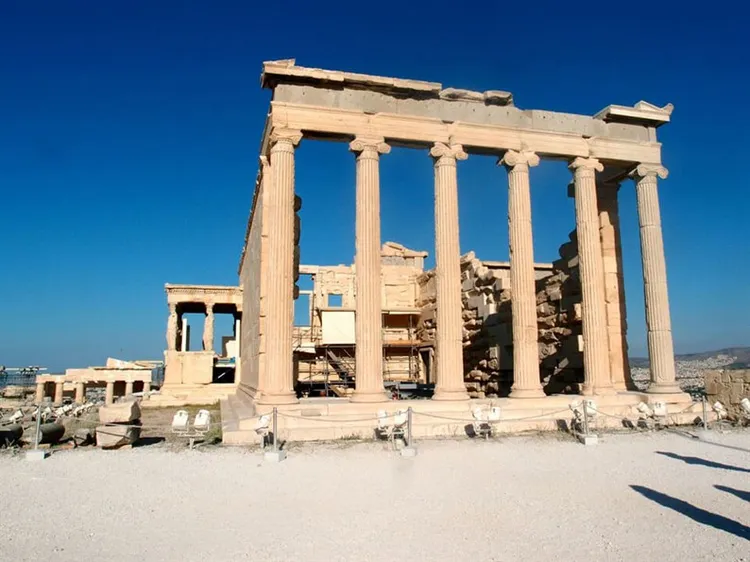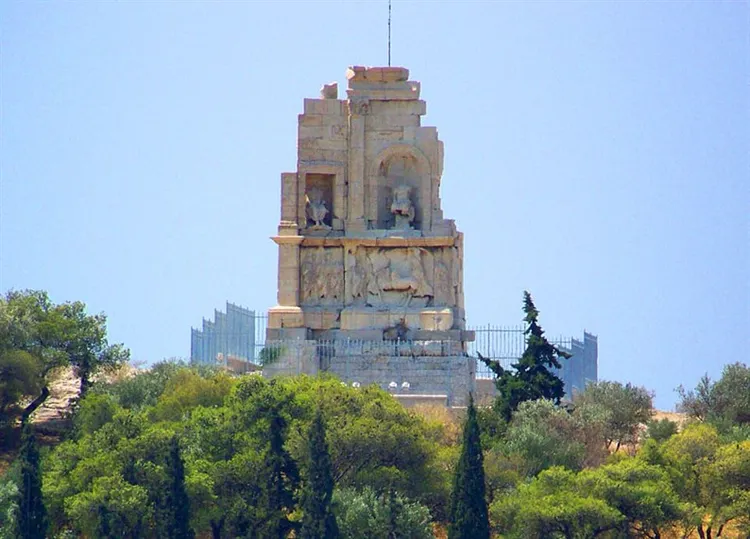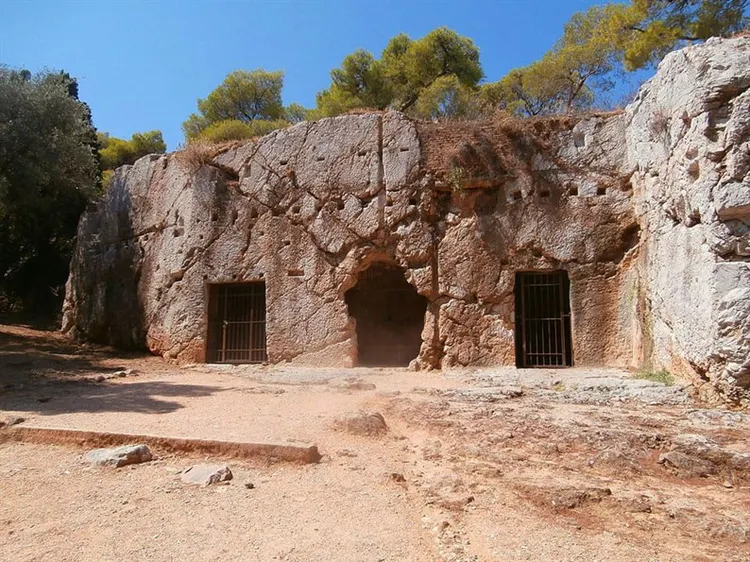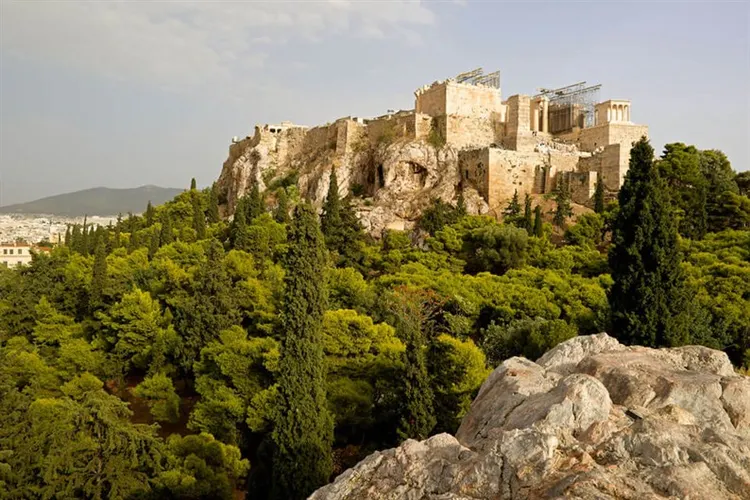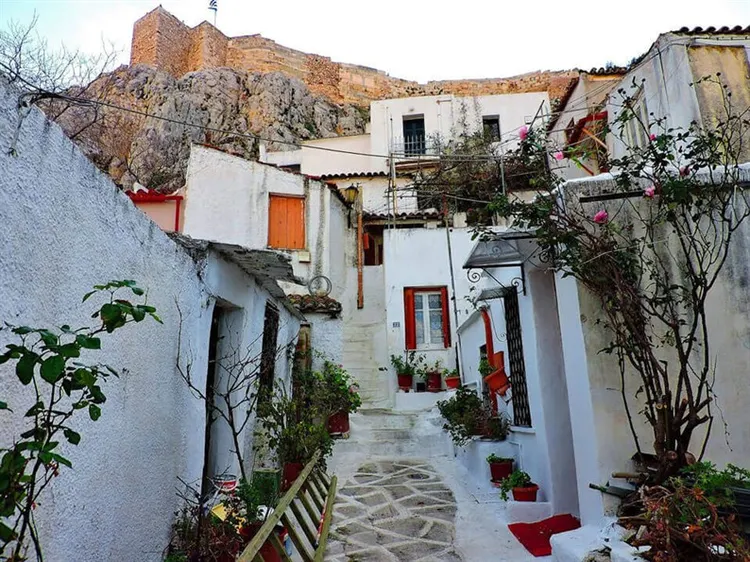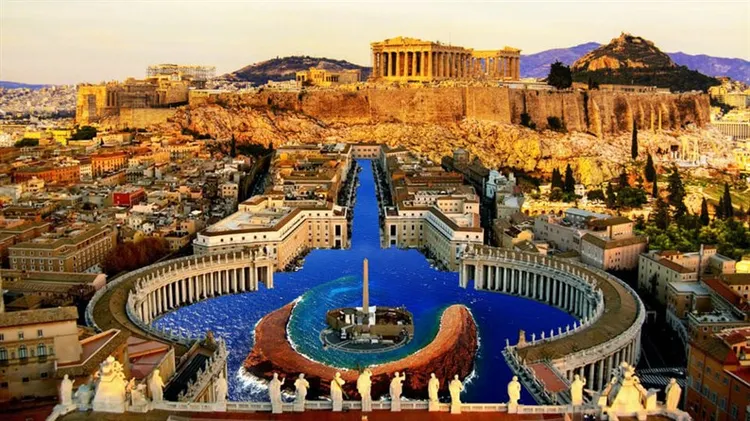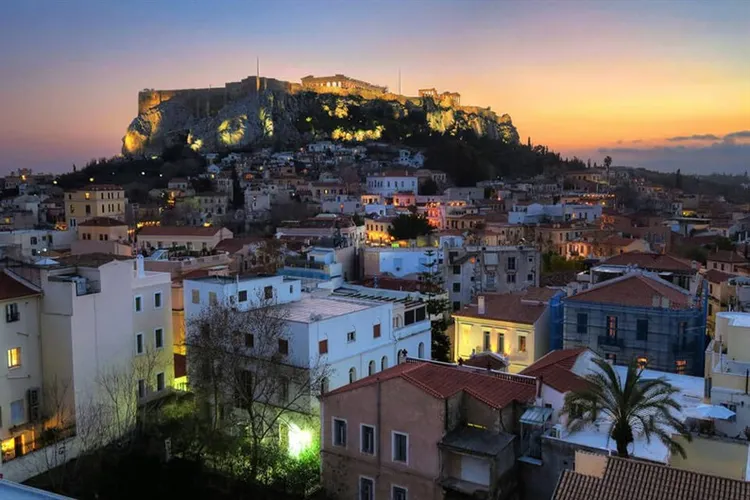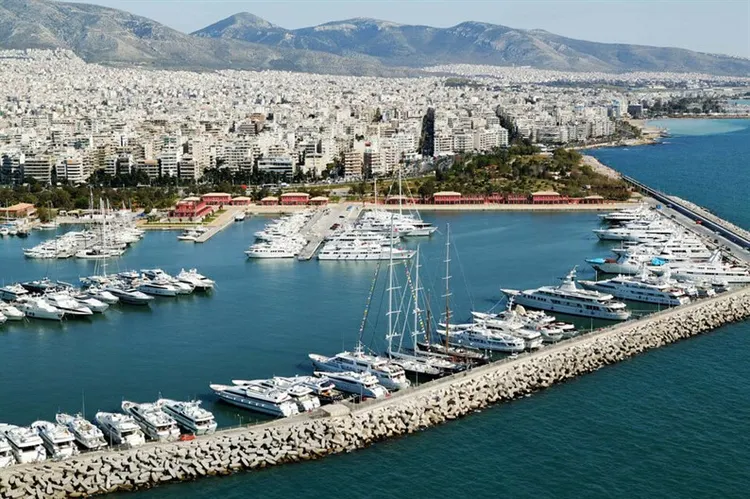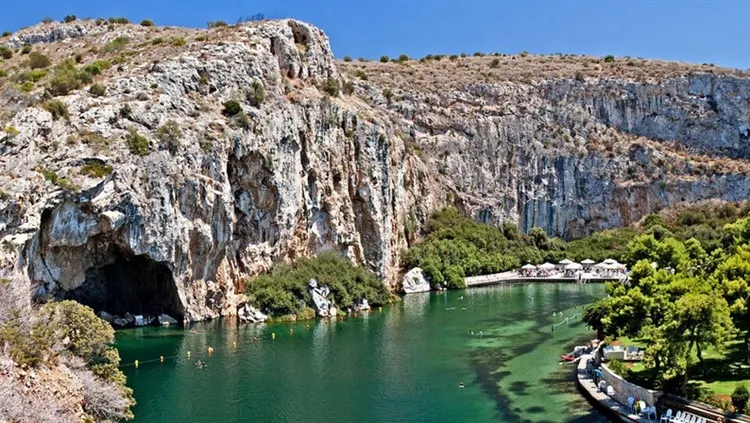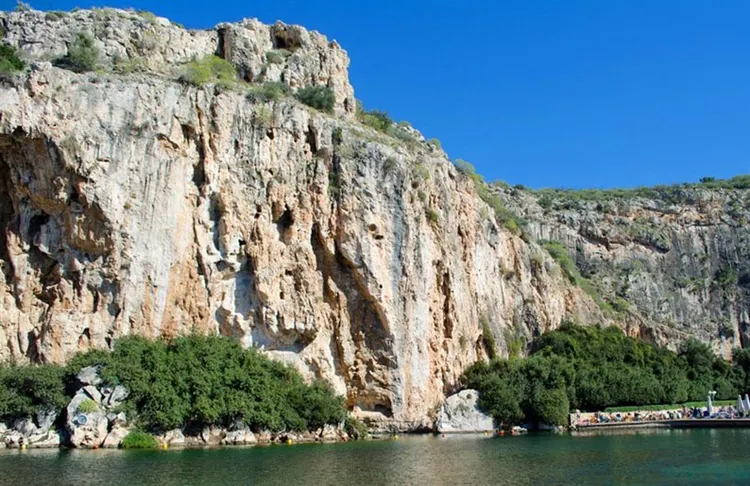What to see in Athens in 2 days on your own – route, photo, description, map
Traveling to Greece first of all attracts with wonderful resorts, recreational conditions among beautiful nature, gentle sea waves. And you always want to find time to get acquainted with its ancient sights. Athens, as one of the most interesting capitals in the world, gives rise to the eternal question: what to see in Athens in 2 days on your own? It is impossible to see, to tell everything about this city in a short time. Using useful tips, taking photographic equipment, comfortable shoes, water, a map of the city with specific routes, you can explore the most interesting places of the ancient city, born in the 15th century BC, in two days. For an effective inspection of compactly located sights, it is proposed to use a tourist bus with an audio guide and drive part of the route, saving time and energy during an interesting journey.
How to get from the airport to the center
There are several options for getting to the central part of the city from Eleftherios Venizelos International Airport. The choice depends on the composition of the group, luggage, financial capabilities. It is useful to first familiarize yourself with the prices, type of travel:
🏨 🚕 Individual transfer from the airport to the hotel and more
First day
Walking along the main city street, it is difficult to resist the offers of numerous shops, boutiques, cafes. You have to find the strength in yourself and move on. The most interesting elements of the city are not here. Each street, old house, stone of ancient ruins is filled with the history of the past centuries. You can discover its secrets, mysteries and beauty in different places. Most often, an accelerated 2-day route leads to the central square of the city.
Syntagma Square and the change of Evzones
At the beginning of the 19th century, on the site of the modern Syntagma Constitution Square, there was a green lawn in front of the royal residence. Gradually, fountains, white marble structures appeared, permission was born to visit it for all residents of the city. Now it is one of the most visited places with a magnificent Palace of Parliament, a monument to the Unknown Soldier, copies of statues from the Naples Museum, old white marble steps leading to Amalias Avenue.
Starting from March 1932, it is proposed to watch the unforgettable beauty of the Changing of the Guards of the Presidential Guards (Evzones) on the square. It runs every hour from 55 minutes and lasts 10 minutes. The ritual takes place especially beautifully at 11 o'clock every Sunday. Strictly practiced movements and actions of members of the guards army are held to the sounds of a military orchestra. Admiration, curiosity is caused by the clothes of the Evzones. Its first version was adopted in 1833. Separate elements (uniform tailcoat, skiver) are borrowed from the style of the Bavarians.
Later, a unified form began to be used using traditional differences. Among them are the famous “tsaruhi” boots with numerous nails driven into the sole. They “click” beautifully while moving. Fluffy pom-poms (tribbles) give them a mysterious look. Interestingly, in ancient times, sharp knives were hidden under them. After a colorful shift, it is allowed to take pictures against the backdrop of bright outfits of real Evzones.
national garden
Walking along Syntagma Square, just look at another attraction – the National Garden. It is located next to the parliament building. Entering the “King's Park”, planted during the reign of the first queen of the independent country Amalia in 1839, is offered through any of the four entrances. The main entrance is on Amalias Avenue. Over 15,000 species of plants grow among the luxurious alleys of the park, 140 of which have already celebrated their 100th anniversary.
The gardener Schmidt supervised the creation of the park. The garden layout uses original thematic compositions based on a harmonious combination of plants and ancient ruins, columns, and mosaics. In the southern part of the garden, sculptures of famous poets of Greece, the first ruler of the country, Kapodistrias, have been preserved. In the depths of the garden rises an ancient aqueduct.
The well-groomed territory of the park (its size is about 16 hectares) is equipped with corners for animals, beautiful ponds, playgrounds for children, with swings, slides, and comfortable benches for relaxing. It is allowed to relax on the green lawns of the park. There is a cafe on the territory of the garden where you can have a meal with the whole family. The National Gardens were included in the lists of “Historical Monuments”.
Zappion Palace building
The natural continuation of the territory of the National Garden is Zappion Park. It is decorated with the famous palace, built in 1888 at the expense of the well-known patron of Greece, Evangelos Zappas, according to the project of Hansen (initially, it was the architect Boulanger). The building was built in neoclassical style, decorated with Corinthian porticoes. It is harmoniously combined with the architectural forms of the Ilissia stone bridge, built at the expense of the same patron. The palace is located next to the Parliament building on Syntagma Square.
The main reason for the creation of the building was the desire to revive the famous Olympic Games of antiquity. This is the first building in the world built for this purpose. During the 1896 Olympic Games, the palace building was used as the “Olympic Village” and as halls for fencing competitions. Now the palace hosts trade fairs, exhibitions, conferences, symposia, concerts, events related to the political life of the country. Election results are announced in the palace, meetings of heads of different states are held.
Kallimarmaro Stadium
The tradition of handing over the Olympic flame, the opening of the games by the head of the country, the performance of the Olympic anthem have long become familiar. They were born here at the stadium of Kallimarmaro or Panathinaikos, on the site of an ancient building in the central part, found during archaeological excavations in 1836. The almost forgotten stadium of Herodes Atticus has been restored to the most similar image of the original marble structure. It was created in 329 BC. e. at the suggestion of Lycurgus in the place of an ancient wooden stadium.
The first modern Olympic Games were held at the stadium in April 1896. The image of the stadium is on the obverses of Olympic medals, collectible coins worth 100 €. Elements of the past decorations of the stadium have survived to this day. These are: marble pillars crowned with sculptures of Apollo, Hermes, starting plates, from where the first athletes of the distant Olympic Games started competitions. The oldest stadium in the world can accommodate 45,000 fans.
The stadium has gone through a complicated history and keeps many secrets. One of them was the discovery of 31 ancient tombs before restoration for the games held in 2004. It is assumed that these are the remains of athletes of the III-IV centuries. AD It is amazing that there is still an opportunity for anyone who wants to run along the treadmills of a unique stadium. To do this, you need to fill out a special form and come here at 7.30 in the morning.
Temple of Olympian Zeus
The desire of the tyrant Peisistratus to overshadow the greatness of the temple of Artemis was realized in the most impressive structure of the ancient world, the Temple of Olympian Zeus. Now you can see only the ruins of a majestic building. 15 columns have survived (out of 104, the last 16th column fell during the storm of 1852), Historians suggest that the main destruction of the Temple occurred in the Middle Ages as a result of strong earthquakes.
Today the ruins are protected by the state and are historical sights. You can view them at a certain time with the purchased ticket of the archaeological museum. The first excavations of the Temple were carried out in 1889-1896. It is proved that it was built from the beautiful marble of Mount Pantepus. The length was about 96 m. The height of the columns reached 17 m, the thickness was 2 m.
The figure of Zeus was considered one of the wonders of the world. There is a legend that tells that the ancient architect Phidias, after finishing work, asked Zeus a question “Is he satisfied with the work.” As a token of approval, a lightning strike was heard, and a crack formed at the feet of the sculptor. The figure of Zeus on the site of the sanctuary, the ancient cultural center is long gone. Some original elements of the temple, found during excavations, are stored in the Archaeological Museum of Olympia.
Arch of Hadrian
On the way to the Temple of Zeus, one cannot fail to notice the ancient arch, built in 131 AD. The building was erected in honor of the Roman emperor Hadrian. He appreciated the culture, art, philosophy of the country. Athens was his favorite city. During his reign, the territory of the city increased significantly, the district of Adrianopolis appeared. The Arch of Hadrian, reminiscent of the triumphal arches of Rome, adorned the entrance to the new city along the road from the old part of Plaka. Now it faces Amalis Avenue. The structure was built from solid Pentilicon marble.
The snow-white color of the mineral in the rays of the sun lights up with a golden hue. Many ancient buildings of the city were built from this mineral. The height of the arch is 18 m. There are pilasters on the sides, ending with capitals depicting the Corinthian order. Higher pilasters adorn the corners of the arch. Columns, a triangular pediment, inscriptions on different sides (on the western side “Here is Athens, the former city of Theseus” and on the eastern side “Here is the city of Hadrian, not Theseus”) have been preserved on the ancient building.
Athens Acropolis
The oldest part of Europe can be seen on the site of the greatest sanctuary, the plateau of the upper city, called the Acropolis. It is often referred to as “Cekropia”, named after the first king of Athens, according to current legend. Here the myths of ancient Greece were born, religious ceremonies, holidays were held, monuments were erected that became the eternal sights of the world. Elements of a complex architectural ensemble harmoniously fit into the surrounding landscape and became classics of the architecture of ancient builders who influenced world culture.
The first buildings appeared on a rocky hill in the sixth millennium BC. The Royal Palace, the defensive fortress Citadel became the center of the ancient kingdom. After the appearance of the famous Temple of Athena Polias, the Acropolis acquired the status of a sacred place. Since that time, monumental buildings and ruins began to appear on the slopes of the hill, which surprise even now.
Among them is the famous Parthenon, which has become the hallmark of the country. Temples Erechtheion, Niki Apteros, Propylaea, Roma and Augustus. Odeon of Herodes Atticus, Portico of the Caryatids, Brauroneion, Theater of Dionysus. At the foot of the hill there is an interesting museum with artifacts dedicated to the history of the ancient area of Athens. Among them are the statues of the famous caryatids of Erecheiton, the Sorrowing Athena.
Hill of Muses
Having rested in a restaurant on the territory of the Acropolis, admiring the extraordinary panorama of the city, an independent journey continues through the places of walks of ancient thinkers. Having overcome an easy ascent to the Hill of Muses to the monument in honor of the religious figure of the II century Julius Filioppapp, you can once again look at the Acropolis, the port of Piraeus, the highest mountain of the city of Lycabettus, the ancient Agora. There is an opinion of the historian Pausanias that the monument is located at the burial place of the famous erudite, poet, musician, philosopher of antiquity Museus.
The modern ball monument was discovered during excavations in 1848. It stood on a large marble pedestal and was decorated with a sculptural composition with figures of relatives and Philopappus himself. On the hill there is a semi-wild park with numerous pines, olives, bats. There are no cafes, restaurants for recreation, paved paths, numerous lanterns. From this hill the order was given by the military leader Francesco Morosini to shoot at the Parthenon, where the Turkish armory was equipped. Almost half of the building was destroyed by cannons. Often tourists climb special stairs at night to get beautiful night shots.
Socrates prison
Descending from the Hill of Muses, one must carefully examine the mysterious entrances to the rocky caves, closed with an iron grate. According to the existing legend, this is the premises of the prison, where the famous Socrates was kept for 30 days awaiting the death sentence of the court. Convicted of dissent, he himself had to choose for himself the type of death penalty. Which he did by poisoning himself. The cave-dungeon was not designed specifically for a prison. According to many historical versions, it was a dwelling, having several floors and carved into the rock by local residents in the 4th century BC.
The stone steps and interior rooms are still preserved. In the minds of people, the caves have lived for many centuries as a dungeon of the legendary philosopher of ancient times. The monument is called the conditional “prison of Socrates”. There is a legend that in the walls of the prison Socrates talked with his friend Crito. In joint conversations, his system of knowing the world through dialogue developed. During the war years, the caves were used to store priceless artifacts of the National Museum. By the way, a modern monument to Socrates is located near the building of the Academy of Sciences.
Pnyx Hill
A small rocky hill located near the city center is of historical value. In ancient times, meetings of the first democratic body of power (ekklesia) in the history of world mankind were held in this place. There was a “Council of Elders” of the city court. Starting from the 6th century BC, the popular assembly of the famous Attica met here. In this place, the foundations of modern democracy were born, its institutions were formed.
Mass voting was held, in which thousands of people participated. Decisions were made on military actions against other countries. Part of the podium from which the ancient speakers spoke has been preserved. The park is fenced and is considered an object of cultural and historical heritage. You can enter it without paying. From the height of the hill, there is a beautiful view of the highest mountain of Athens, Lycabettus, the Acropolis, the Areopagus hill, the Agora. The hill is considered one of the favorite places for walking locals.
She cried
The journey of the first day continues in the oldest district of Plaka. There are many souvenir shops, shops, restaurants. In any city, walking along the old streets is a great pleasure. The spirit, the atmosphere of the ancient life of the city is felt on them with extraordinary force. Especially in this area, where ancient buildings are built on the foundations of ancient buildings, retaining their attractive power. Many residents have received new housing in modern neighborhoods, providing ancient structures for the area's many museums. The central square of Plaka is called Philomousos.
So it was named in 1813 by representatives of the ancient Society of worshipers of the Muses (nine goddesses). An interesting children's museum is located on the ancient Kidafenion Street. The former interior has been restored in it, it is proposed to try on old clothes. In the area you can walk along the oldest Hadrian street. Its direction has not changed since ancient times. Loud music, fun in nightclubs, casinos are prohibited in the area. It is considered a calm area of measured rest.
Bar Tour: Greek Wine with Style
At the end of the first day of exploring the city on your own, it's time to relax, get ready for your next trip and try real Greek wine. It is better to do it together with the Russian-speaking guide tripster.ru, who will help you choose a place to stay. He will tell you about the history of winemaking in Greece, introduce you to the styles of wines during a walk with a winemaker. Along with filled glasses during the evening tasting, it is nice to hear the history of the appearance of some styles of wine:
The story contains interesting facts about the ancient technology of wines. Information about the peculiarities of the Mediterranean wine styles. How the use of the French invention of glass bottles came into being.
Second day
In the ancient city and its environs, there are many interesting natural sights, architectural buildings erected in our time. Some of them are offered to see on the last day of acquaintance with Athens.
Rooftop walk
The city, which stands on 12 hills, has many places that offer views of the surroundings, streets, buildings. There are always many who want to see the beauty from a bird's eye view. They are invited to use observation decks on the hills of the city, tall buildings. The roofs of bars, restaurants, high-rise buildings provide an exciting walk through the city at night. You can use the roofs of the buildings of Monastiraki Square.
All roofs of high-rise buildings located at different levels are safe and comfortable for walking. The sights seen from them, as if others, flying above the ground and come to life, despite their ancient age. Fans of “original walks” can sit on the roof, drink coffee and see the whole wonderful city at once, the silhouettes of mountains, ships.
Stavros Niarchos Foundation Cultural Center
Sometimes the architectural ensemble that appeared in the 21st century is called the “Modern Acropolis”. An architectural marvel, built from modern materials using new technologies, is located near the port of Pirea. The author of the original project is Renzo Piano (financial support is provided by the Stavros Niarchos Foundation, a descendant and heir of Greek shipowners). In his idea, the harmony of visual contact with the sea and the beauty of an artificial hill with an unusual building were realized.
It is as if it grows out of the sea and sparkles with an unusual roof next to the clouds. Trees, shrubs, bright flowers continue to grow on it. A man-made park with an area of about 210,000 sq.m. has been created on the roof. The ensemble houses the National Library and Opera House buildings. The auditorium has a capacity of 1,400 seats and another 400 seats are located in the plastic and dance theater.
The opening of the complex took place in 2017. At the top of the 8-storey building is the glass hall of the library. It offers an extraordinary panoramic view of the city. The roof of the building is made in the form of a curved aircraft wing, made with a special material that can withstand earthquakes.
Harbor Flisvos Marina
The name Attica in translation means “coastal country”. The relief of the coast has lagoons, harbors used for parking yachts and ships. Now the marinas of Attica, with a well-protected water area, are used for private vessels, charter flights. Among them, Marina Flisvos harbor is considered the main port for luxury yachts on the east coast. There are 303 berths in the harbor. Each is equipped with electricity, water. There is a convenient refueling station with the necessary fuel, Internet access, shower, toilet. The entrance to the harbor is marked with luminous signs.
The area is clean and tidy. On the shore, fenced with high curbs, there are benches for rest. Marina Flisvos is considered one of the most popular places for walking. In the evenings, music sounds here, numerous cafes, restaurants work, lights sparkle, highlighting the sea, beautiful yachts. For walks with children, there are many play areas. Next to the pier is a seaside park that adds to the festive atmosphere of the harbour.
Lake Vouliagmeni with thermal springs
At a distance of 21 km there is an interesting natural landmark, the secrets of which are just beginning to be revealed. Myths and legends of antiquity are not associated with it. As scientific studies show, the lake, which stores a complex system of karst caves, underground currents appeared much later. Thermal lake up to 20 m deep, connected with the volcanic arc of the area. At its bottom, springs with water containing excess sulfur beat. Warm, healthy water attracts many people here all year round, despite the myth of the mermaids of the lake, kidnapping young children.
14 tunnels were found in the lake. One of them is considered the largest in the world. Due to the repeated accidents that have occurred during the diving of divers, now only scientific groups are allowed to explore the bottom. Aerial photographs have found caves in the lake, rocky wells, a stalagmite, considered the largest in the country. A species of fish was found in the lake that can cleanse human skin (Doctor fish). There is a nice beach near the lake. A doctor and a rescue team are on duty around the clock. The place of relaxation is a favorite recreation area of the townspeople.
Cape Sounion
At the southernmost point of the peninsula (at a distance of 65 km) is Cape Sounion, glorified by ancient legends and myths. On a cliff, open from the Aegean Sea, rise the ruins of the ancient Temple of Poseidon. It was from this place that King Aegeus looked intently at the sea, waiting for the return of his son Theseus on ships with white sails. So it should have been in the event of a victory over the Minotaur. Unfortunately, the son forgot to change the sails and the king, seeing the black color, rushed into the sea. After some time, the inhabitants erected two temples in this place, dedicated to the main deities of Greece: Poseidon and Athena.
The temple of the ruler of the seas, Poseidon, stood on the peak of the rock from 490 to 480 BC. The sanctuary was destroyed during the battle with the Persians. Now its ruins (15 columns on a massive base) are considered the best preserved of the architectural buildings of that time. During archaeological excavations in 1994, the ruins of the central street, the sanctuary of Athena, were discovered. A visit to Cape Sounion helps to understand how life flowed on the coast of the sea, named after one of the first rulers of Athens, the legendary king of Attica.
Sunset on Lycabettus Hill
The highest place in the city is located on Lycabettus Hill (Lycabettus, Lycabettus). A natural formation with a height of about 233 m is located in the center of the city, which allows you to view its beauty in the maximum view. In sunny weather, even the Acropolis, the stadium of Kallimarmaro, the port of Piraeus, and nearby islands are visible. A beautiful legend says that the goddess Athena brought this boulder in the center of the city to raise her temple to the clouds. After listening to the unpleasant news from two black birds, she threw the boulder to the ground. Since then, he has been in the center.
It is sometimes called “wolf hill” because of the large number of animals it inhabits. At the top of the hill there is an observation deck, the oldest bar where Greek wines are offered. A small chapel of St. George, built on the site of the ancient temple of the prophet Elijah. On Easter days there are always a lot of people here. Thousands of candles are burning and believers descend from the hill with them. You can climb the hill on foot, on the lift. An unforgettable sunset on Lycabettus Hill will leave a special impression on the city and invite you to come here again.

